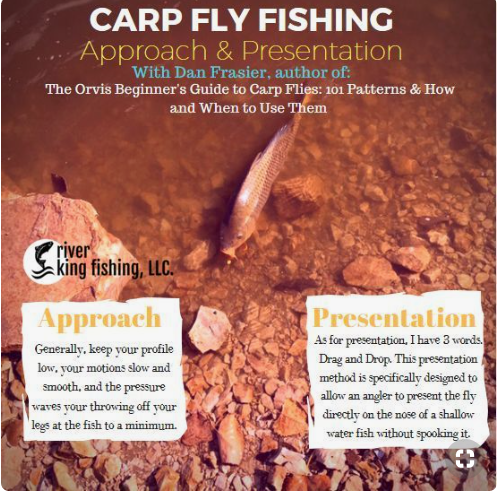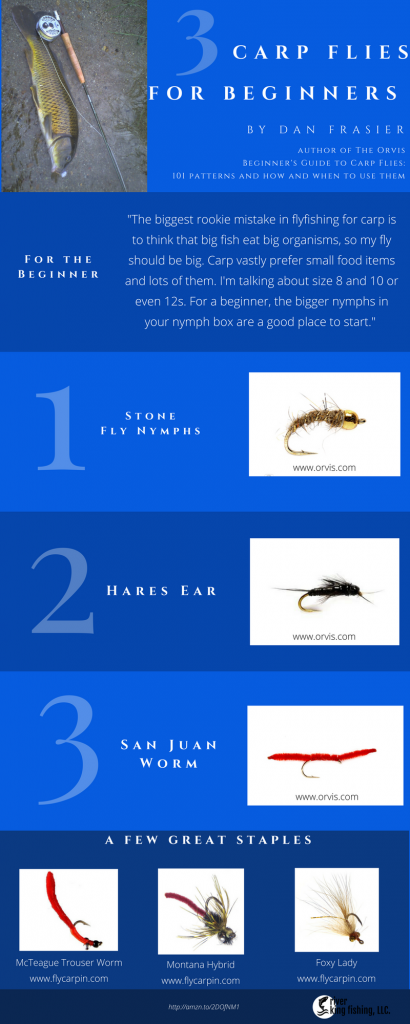Carp on the Fly for Newbies with author Dan Frasier
Disclaimer: This website uses affiliate links, meaning: at no additional cost to you, we earn a small commission if you click-through and make a purchase. As an Amazon Associate I earn from qualifying purchases. We only feature products that we believe in and use ourselves. Your support means the world to us and allows us to host this website. Thank you!
Watching the below video a few years back captured my attention like nothing else I've seen in fishing. While I have always loved fishing, I especially have a soft spot for carp. Still after more than 20 years, I had not seriously explored fly fishing for them.
I know first-hand the pulling power, the long runs, the relentless battle that is catching Carp on conventional gear. The thought of attempting to land an "average" Carp (5-15lbs around here) on the fly was intoxicating.
Back to the video. There is so much beauty here. The contrast demands your attention. The gorgeous music sets the stage for an unlikely pursuit. His quarry is not the prized rainbow trout but the often shunned Common Carp. The artful cinematography captures an urban setting antithetical to Montana. The star of the show is not Brad Pitt. He's a real, incredibly skilled fly angler in Asia, not a Hollywood actor pretending to be one. It's pure art and I hope you watch this all the way through to whet your appetite. It's only a brief introduction to what's possible fly fishing for Carp.
I've since followed multiple Facebook groups to see what fly patterns others use, what gear is required to land a Carp, and most of all, what tactics one uses getting started to catch these highly wary fish on the fly. I noticed Dan Frasier's book pictured at bottom and sought more information, ultimately asking Dan to do a couple of interviews with me. Lucky for me, Dan agreed to share his insights and what follows is a very detailed, value-packed summary. What's shared is more than sufficient to get a new angler started and ultimately may help you land your first Carp on the fly.
1. What’s most important to learn getting started fly fishing for carp? There are two critical concepts that beginning carp fly anglers struggle to get their head around are the difference between months of frustration and consistently catching fish.
The first is understanding good and bad situations for targeting carp and the second is fly presentation. Every new angler I know will tell you about the spot they know of that is "just full of carp". They often see them splashing, or jumping or during the spawn in large numbers at a particular spot. Thinking like we do about traditional gamefish species kicks in at this point and the angler assumes they can go back there and catch them. This notion works with traditional gamefish species because we are usually blind-fishing for predatory fish. So if the fish are there and we can get a fly in front of them we have a good chance of getting an eat. Carp are different. Most carp need to be fed a fly that appears easy to eat while they are in a feeding situation. This defines the water we need to be looking for.
Rather than looking for carp, an angler must look for carp in a FISHABLE situation. Those include finding feeding fish where individual fish are readily identifiable and very accurate presentations can be made to them. Most of the time that means shallow, relatively clear water with carp feeding along the bottom but not out of sight. The second critical difficulty new anglers experience is the understanding that carp very rarely chase a fly. Presentation needs to be within a few inches of the carps face and are best done with no motion on the fly. VERY tiny strips or a crawl can work sometimes but rarely result in more hook-ups than a motionless fly. Still flies make detecting the take more difficult so that angler has to be prepared to set the hook at the subtle indications carp give that they've eaten, but generally a motionless fly will get eaten far more often than a moving one.
2. Is a lake a better setting to practice than a river trying to catch your first carp on the fly? It depends. Moving or still water is a far less important concern than visible fish in addressable situations. So if the river is clearer and the flats nicely shallow, leaving the carp easy to see then you have a good fishable situation. If the lake has large feeding zones that allow you to see fish well and approach them for a presentation, then the lake is better. It all comes down to situation.
3. What flies are must-haves to get a carp fly fisherman started? Smaller than you think. The biggest rookie mistake in fly fishing for carp is to think that big fish eat big organisms, so my fly should be big. Carp vastly prefer small food items and lots of them. I'm talking about size 8 and 10 or even 12s. For a beginner, the bigger nymphs in your nymph box are a good place to start. Stonefly nymphs, Hares ears, and San Juan worms will all catch carp. For someone looking for flies who doesn't already have a trout box full of them, a few great staples are the Montana Hybrid, McTague's Trouser Worm, and the Foxy Lady. (Below flies in order, images per www.flycarpin.com & www.intheriffle.com)






